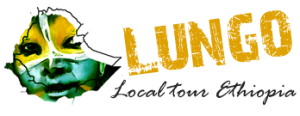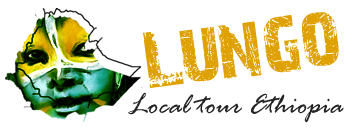Lonely planet book, thorn tree Ethiopia travel forum, tripadvisor forum Ethiopia and Recommended Travel Books are important before you start the tour in addition.
– Lonely Planet; Ethiopia
– Bradt Travel Guide; Ethiopia
– Spectrum Guide to Ethiopia and
– Discover Ethiopia (brochure); published by Ministry of Culture and Tourism of Ethiopia.
Think seriously about whether you need to travel here due to the high level of risk. If you do travel, do your research and take a range of extra safety precautions, including having contingency plans. Check that your travel insurer will cover you.

The FCO advise against all but essential travel to:
within 10 km of the border with Eritrea, with the exception of: the main road through Axum and Adigrat; tourist sites close to the main roads (eg Debre Damo and Yeha); and open border crossings with Eritrea and the main roads to these border crossings. You should take local advice and not walk away from roads or towns unaccompanied
all other areas of the Ethiopian Somali Region, including Siti zone, Fafan zone (with the exception of the main road and railway line to Djibouti), and the areas of Liben and Afder zones more than 100km from the Somalia and Kenya borders
the woredas (districts) of Tsegede, Mirab Armacho and Tach Armacho in North Gonder zone
the West Wollega and Qellem Wollega zones in the Oromia region, with the exception of the main Addis Ababa-Gambella road
the rest of Gambella region, except the main Addis Ababa-Gambella road

Best Time to Go
Ethiopia can be visited at any time of the year and given its size, climate can vary from one region to another. In general, the best time to go is during the dry season which is around October until June (except in South Omo which experiences rainy weather on April and May). Peak season is between October and January when scenery is still lush and green.

Best time to tour the Historic Route
In general it is best to travel here in the months directly after the rainy season. So from October to March most people will visit these areas. Some advantages to traveling here during the rainy season are encountering fewer tourists at the main sights (particularly in Lalibela) as well as seeing the landscapes when they are green and more impressive. Traveling during rainy season will also give you discounts and most days you will do just fine with an umbrella in hand.

Best time to trek in the Simien Mountains
The best months to trek here are from September through November. The rainy season ends slightly sooner here than in the north and central parts of the country, and the trekking views are stunning when everything is still green. The wildflowers are in full bloom in October and the area is still relatively dust free due to the moist grounds.

Best time to visit Omo Valley
The Omo Valley follows a rainy season pattern that is slightly earlier than the rest of the nation from April through June, and has a short second rainy season in October as well. The best times to visit this area are August to October, as well as from December to January.

Best time to visit Danakil Depression
The Danakil Depression is one of the hottest places on Earth, with temperatures averaging up around 120 F most of the year. The ‘coolest’ time to visit the area is from November to early January. Any other time of year and you are likely to see temperatures above 120 F.

What is the Best time to visit Ethiopia?
Ethiopia can be visited at any time of the year. The northern part of Ethiopia has a different climate than the south, making it somewhat difficult to provide a “best time”. The north has a rainy season during our summer months. Although there is substantial rain fall it is still possible to make nice trips to the north at this time (July and August). Visiting Ethiopia at the rainy season has also its own advantages. The scenery is particularly wonderful green in September and early October. At this time the whole country will be a riot of wild flowers. The best time to visit Ethiopia though is probably from October – March (the dry season). South-Ethiopia (Omo Valley) has a short rainy season in November and again in late March and early April but apart from that, this is a nice period to travel. During the rains the roads in the south can be severely affected, thus it may be necessary to adjust the route.

What Weather should I Expect in Ethiopia?
Ethiopia’s climate reflects its topography. The highlands are classed as temperate with an average daytime temperature of 60°F (16°C). The far south and the eastern lowlands are hot and dry; the western lowlands are hot and humid. Throughout the trip, you can expect temperatures between 59° –77°F (25°– 15°C).

What is The Time Difference?
Ethiopia has a different time calculating system and three hours ahead of Greenwich Mean Time (GMT). The Ethiopian day is calculated in a manner similar to that in many equatorial countries, where day and night is always the same length. Time remains constant through the year counting starts from western 6 a.m. and 6 p.m. Western 7 a.m. is therefore one o’clock, noon is 6 o’clock and 6 p.m. is 12 o’clock. In Addis Ababa, then sunrise and sunset at around 6:30 and 18.45 respectively.
Please check the world clock in order to find out the exact time difference

How to book your Tour
Complete the Tour booking form and attached to your tailor-made tour quotation and return via e-mail.
Do you offer group tours or discounts?
Yes we do!
What currency should I Bring?
Local payments at restaurants, shops etc will be paid in the local currency. The local currency is the Ethiopian birr (ETB), made up of 100 cents. Birr notes are available in denominations of 5, 10, 50 and 100.
Visitors may import an unlimited amount of foreign currency USD, Euro or GBP which should be declared on arrival to the customs authorities on the appropriate blue-colored form.
Foreign currency may only be exchanged at authorized banks and hotels and a receipt must be obtained. Pounds are as good as Dollars & Euros in banks. The currency declaration form must be retained as this will be required by customs on departure.
Visitors may change back any surplus Ethiopian birr to cash at the exchange form you must bring with you all receipts for exchange transactions.

Can I withdraw money in Ethiopia?
Very occasionally you can PIN in Ethiopia but the ATMs are ABSOLUTELY UNRELIABLE! We therefore ask everyone to bring cash to exchange instead. Euros and Dollars, you can easily change, as long as you do not use crumpled or torn notes. Currency exchange is time consuming, so it helps to change up the necessary amount at the start of your trip. As long as you bring the receipt of the exchange transaction it is no problem to switch money back, if there is anything left. Try also to save as much small change as possible because it will be handy, especially in southern Ethiopia.

Are credit cards accepted ?
Yes, you can access cash with most visa and master cards at some locations in Addis and at major hotels, airlines and ticket offices mostly in Addis Ababa.

Can you arrange my flights?
We would be happy to take care of your air arrangements. We offer personalized flight itineraries — not group flights. Stop over en route, come in a few days early, or extend your stay. Email or use our live help for a customized flight itinerary.

Which Airline flies more often to ADDIS ABABA (ADD)?
There are many international Airlines which fly to and from Addis Ababa (ADD). The following listed airlines also fly to and from Addis Ababa most of them on a daily base from Europe and U.S.A: Lufthansa, KLM, Emirates Airlines, Gulf Air, Turkish Airlines, BMI, and Egypt Air. For More information: – http://www.ethiopianairlines.com

Is Photography prohibited in any Areas?
Yes, there are some areas where photography is prohibited both in Addis Ababa and around the whole country like, the main palace; military camps, and organizations and some infrastructures such as the bridge over the Abay (Blue Nile) River etc. And it is best practice to always ask permission when taking photographs of people. In the remote regions you are expected to pay a little money to take photographs of people. The churches allow photography but are now beginning to insist, and quite rightly so, that flash photography is not used to prevent further damage to artifacts. So, a tripod or monopod is essential in these situations (and worth it as atmospherically the low level lighting is fantastic).

Do I need visa?
Yes. A valid passport with more than six months before expiry is essential.
Visas are required for all visitors, however; Nationals of the 36 countries, listed here below are given visa on arrival at Bole international Air Port at the regular charge.
1. Argentina
2. Australia
3. Argentina
4. Australia
5. Austria
6. Belgium
7. Brazil
8. Canada
9. China
10. Check Republic
11. Denmark
10. Finland
11. France
12. Germany
13. Greece
14. India
15. Ireland
16. Israel
17. Italy
18. Japan
19. Kore Republic
20. Kuwait
21. Luxembourg
22 Mexico
23. Netherlands
24. NewZealand
25. Norway
26. Poland
27. Portugal
28. Russian Federation
29. Slovakia
30. South Africa
31. North Korea
32. Spain
33. Sweden
34. Switzerland
35. United Kingdom
36. U.S.A

What Vaccination Do I Need?
All visitors should be in possession of valid yellow fever vaccination certificate. Immunization for Hepatitis A and B, Typhoid and Polio is recommended.
Malaria: in many sites malaria is not a problem because of the elevation – this is true of Axum, Gondar and Lalibela for example, but it can occur in Bahir Dar at the end of the rainy season and after unseasonable rains.


